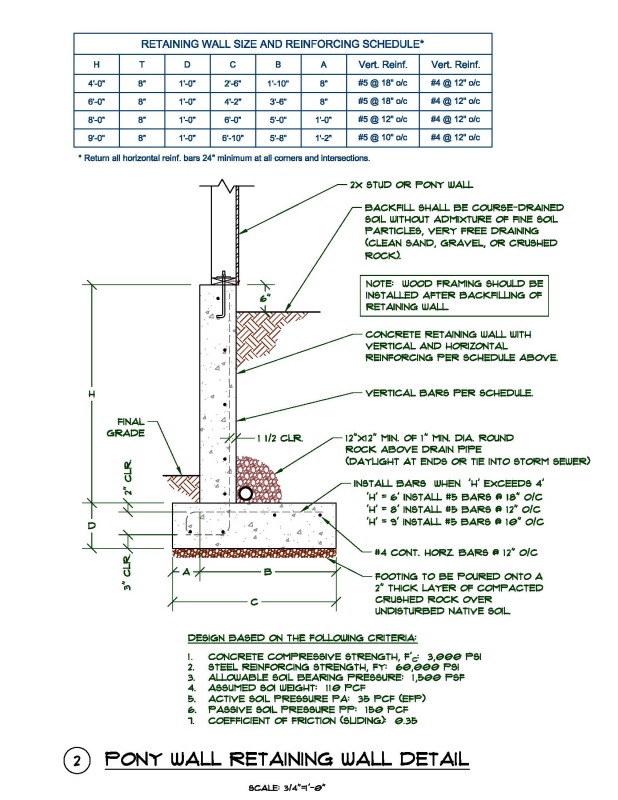medeek
Structural
- Mar 16, 2013
- 1,104
I've spent the last couple of years working on residences with relatively shallow basements, stem walls usually not more than two to four feet in height. I'm now working in an area where uneven terrain seems to be the norm or at least more likely. I've seen some stem walls designed in these situations with unbalanced fill, designed as retaining walls. I'm looking for more examples of this type of situation where you have a stem wall exceeding 4ft in height with unbalanced fill. What is a typical retaining/stem wall design? What factors are at play? And what things should I look out for?
With a typical basement wall the interior slab will provide some lateral restraint or at least that is my understanding. I'm also looking for any good resources on foundation and basement design in general.
Another thing I've noted is that with post and beam foundations usually I see a designer use a 4x8 beam with 4x4 posts. With this new area I'm working in the designer likes to use 2x4 stud walls on a strip footing, rather than post and beams. I'm not saying this is wrong but I'm curious to what the pros and cons are from an engineering perspective.
A confused student is a good student.
Nathaniel P. Wilkerson, PE
With a typical basement wall the interior slab will provide some lateral restraint or at least that is my understanding. I'm also looking for any good resources on foundation and basement design in general.
Another thing I've noted is that with post and beam foundations usually I see a designer use a 4x8 beam with 4x4 posts. With this new area I'm working in the designer likes to use 2x4 stud walls on a strip footing, rather than post and beams. I'm not saying this is wrong but I'm curious to what the pros and cons are from an engineering perspective.
A confused student is a good student.
Nathaniel P. Wilkerson, PE


